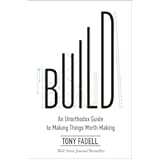How to Master Your Money Management: Strategies for Real Estate Professionals and Entrepreneurs
Are you navigating the complex world of personal and business finance, wondering if there’s a more effective way to manage your income and build lasting wealth? If you’ve ever felt caught between conflicting financial philosophies, as shared in the insightful video above by Tom Ferry, you’re not alone. Many entrepreneurs and real estate professionals grapple with common money management pitfalls, often leading to unnecessary financial stress and missed opportunities. This article dives deeper into the foundational principles and advanced strategies Tom discusses, offering a comprehensive guide to help you transition from merely earning money to strategically building wealth.
The journey to financial mastery begins not with how much you earn, but with how intelligently you manage what you earn. This isn’t just about saving; it’s about establishing systems, understanding tax implications, and making your money work harder for you. We’ll explore how shifting your mindset, incorporating your business, and segmenting your income can transform your financial trajectory, ultimately steering you towards the coveted 5% of generational wealth builders.
Shifting Your Money Mindset: Money as a Tool
What if you viewed money not as a goal in itself, but as a potent tool, much like a hammer in a carpenter’s hand or an app on a smartphone? Tom Ferry emphasizes this crucial perspective: “Money is a tool, nothing more, nothing less.” This analogy highlights that money merely amplifies your existing traits and intentions. If you are generous, money enables more generosity; if you are financially reckless, more money often leads to greater recklessness.
This fundamental shift in perspective is vital for effective money management. It moves you away from emotional spending or hoarding, and towards strategic allocation and investment. Recognizing money as a neutral instrument empowers you to wield it with intention, directing it towards your financial goals rather than allowing it to dictate your actions. It’s about proactive control, ensuring every dollar serves a defined purpose within your broader financial strategy.
Understanding the Financial Landscape: The 5-15-80 Rule
Tom introduces a compelling framework for understanding wealth distribution: the 5-15-80 rule. This isn’t just a statistical observation; it’s a stark reminder of where most people stand and what it takes to break free from the majority. As he explains, 80% of individuals will likely need to work into old age or depend on government or family subsidies for their lifestyle. This group often lacks a proactive money management system, spending as income comes in without a clear strategic plan for the future.
The 15% represents the comfortable middle class. These individuals typically own a home, possess some savings, and enjoy occasional vacations. They’ve achieved a degree of financial stability, often through diligent work and basic savings, but may not be actively building substantial generational wealth. Think of Tom’s in-laws, who achieved a million-dollar net worth through consistent, long-term savings and smart, early investments, like purchasing Ford stock in 1948.
Finally, the elite 5% are those who build generational wealth, often starting with a net worth of $5 million or more. This group doesn’t just manage their money; they engineer it. They implement sophisticated financial strategies, optimize for taxes, and invest for long-term appreciation, ensuring their wealth extends beyond their lifetime. Understanding these categories is the first step toward consciously deciding where you want to position yourself and then implementing the financial discipline to get there.
The Power of Incorporation: Why Your Business Needs a Separate Identity
One of the most critical, yet frequently overlooked, money management strategies for entrepreneurs and real estate professionals is business incorporation. As Tom emphatically states, a staggering 80% of real estate professionals commit a “cardinal sin” by depositing commission checks directly into their personal accounts. This simple act can lead to significant overpayment of taxes and a blurred line between personal and business finances, complicating everything from deductions to audits.
Incorporating your business—whether as an LLC, S-Corp, or other entity—creates a legal distinction between you and your business. This separation offers substantial tax advantages. Business expenses like marketing, a portion of your home office, vehicle costs, and even health insurance premiums can become legitimate write-offs against your business income, significantly reducing your taxable income. Furthermore, it provides a layer of liability protection, shielding your personal assets from business-related debts or lawsuits.
Consulting with a qualified CPA is paramount to determine the best corporate structure for your specific situation, considering your location, income, and business goals. The goal is to ensure your checks are issued to “Blankety-Blank LLC” or your chosen corporate name, not to you personally. This strategic move is not just a formality; it’s a foundational step towards sophisticated money management and tax optimization that the financially savvy consistently employ.
Segmenting Your Income: The 15% Approach to Financial Clarity
Once incorporated, the next step involves meticulous income segmentation. The 15% of financially comfortable individuals understand that a single checking account is a recipe for financial chaos. They create distinct accounts to compartmentalize their money, providing unparalleled clarity and control over their finances. Tom highlights three essential accounts for this level of management: a business operating account, a tax account, and a personal/home account.
Imagine receiving a $10,000 commission check. The strategy dictates that this money first hits your business account. From there, a portion is immediately diverted. For instance, based on Tom’s example, 33% ($3,300) should automatically transfer to your dedicated tax account. This proactive step ensures that money for Uncle Sam (or your respective tax authority) is set aside before you even see it, preventing year-end tax surprises and penalties.
Another 33% or less ($3,300) remains in your business operating account to cover marketing expenses, MLS dues, virtual assistant salaries, and other operational costs. This strict allocation keeps your business solvent and prevents you from dipping into funds needed for growth. The remaining 34% ($3,400) is then transferred to your personal/home account. This disciplined approach means you only spend what’s allocated for personal use, forcing a budget and curbing the common habit of spending every dollar earned. This system transforms income into a well-organized flow, ensuring that every financial responsibility is met with precision.
Elevating Your Wealth: Advanced Money Management Strategies (The Rich Agent’s Blueprint)
While the three-account system sets a solid foundation, the truly wealthy adopt an even more sophisticated approach, often incorporating what Tom calls a “financial hub” or investment account. This strategy goes beyond merely paying taxes and covering expenses; it’s about actively growing your wealth and building multiple income streams. The 34% initially allocated for personal use is further subdivided into various strategic buckets, each serving a distinct purpose in your long-term wealth accumulation plan.
Consider the final $3,400 from our $10,000 example. Instead of going entirely to personal spending, it becomes the fuel for your future. This might include contributions to a retirement account (like a 401K or IRA), investment in the stock market or bonds, or funding a 529B account for educational expenses. A particularly powerful suggestion is to create a dedicated “cash for real estate” account, funneling 5% of every check into it. Over time, this disciplined accumulation can amount to significant capital—$185,000 in two years, for instance—providing the liquidity to purchase income-generating properties like duplexes or fourplexes without needing external financing.
Crucially, a “fun account” is also a vital component of this advanced system. By allocating a specific portion for vacations, hobbies, or simply guilt-free spending, you prevent the psychological rebound of deprivation that often sabotages strict budgeting. This comprehensive financial ecosystem ensures that every dollar has a job, from immediate needs to long-term investments and even deserved indulgences, all contributing to a robust and sustainable wealth-building journey.
Beyond the Basics: Smart Debt vs. Destructive Debt
As you refine your money management strategies, understanding the nature of debt becomes paramount. Not all debt is created equal. Tom emphasizes the distinction between “smart debt” and “dumb debt.” This is a crucial area often misunderstood by the 80% and mastered by the 5%.
Smart debt, often termed “good debt,” is an investment that generates income or appreciates in value, ultimately increasing your net worth. A mortgage on a primary residence or an investment property, particularly at low interest rates (e.g., 3.5%), falls into this category. This debt is leveraged to acquire an appreciating asset or to fund a business venture with a high return on investment. The key is that the asset or venture typically generates more value than the cost of the debt.
Conversely, “dumb debt” or “bad debt” is typically high-interest debt incurred for depreciating assets or consumption, offering no long-term financial benefit. Credit card debt with exorbitant interest rates (e.g., 19%) is a prime example. This type of debt drains your resources, traps you in a cycle of payments, and actively works against your wealth-building efforts. The goal of sophisticated money management is to strategically utilize smart debt for growth while aggressively eliminating or avoiding destructive debt to free up capital for investment.
Building Your Future: Actionable Steps for Financial Mastery
The insights shared by Tom Ferry and expanded upon here aren’t merely theoretical; they are a blueprint for actionable change. To truly manage your money like the rich, discipline and a proactive approach are non-negotiable. Begin by assessing your current financial structure and identifying areas where the 80% mindset might still be influencing your decisions.
Within the next 30 days, make it a priority to consult a CPA regarding incorporating your business. This single step can unlock significant tax advantages and lay the groundwork for a more professional financial operation. Simultaneously, begin the process of setting up separate bank accounts: a business operating account, a dedicated tax account, and a personal/home account. Automate transfers whenever possible, ensuring that a portion of every check immediately funds your tax obligations and business expenses.
Once this foundation is stable, explore expanding to the advanced strategies of the wealthy. Consider establishing an investment hub with accounts for retirement, real estate cash, and even a designated “fun” fund. Regularly review your debt portfolio, prioritizing the elimination of high-interest bad debt. By consistently implementing these money management strategies, you move beyond hoping for financial success to actively engineering it, transforming your financial trajectory and building enduring wealth.






